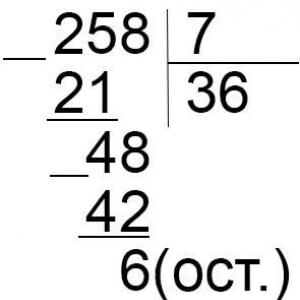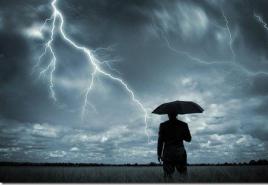Smolensk operational direction on the map. Detailed map of the smolensk region with settlements
The satellite map of the Smolensk region shows that the region borders on the Moscow, Bryansk, Pskov, Kaluga and Tver regions, as well as on Belarus. The area of \u200b\u200bthe region is 49,779 sq. km.
The region has 25 municipal districts, 2 urban districts, 298 rural and 25 urban settlements. The largest cities of the Smolensk region are Smolensk (administrative center), Vyazma, Roslavl, Yartsevo and Safonovo.
The economy of the Smolensk region is based on manufacturing industries: mechanical engineering, chemical and food industries, as well as energy and the construction industry.
National Park "Smolenskoe Poozerie"
A brief history of the Smolensk region
In the Old Russian period, the Smolensk Grand Duchy was located on the territory of the modern Smolensk region. In 1404 the principality became part of the Grand Duchy of Lithuania. In 1514 the lands were annexed to the Moscow principality. In 1618, these lands were transferred to the Commonwealth. In 1654, the region finally became part of the Russian state.
In 1708 the Smolensk province was formed. In 1929 the region became part of the Western Region. In 1937 the Smolensk region was created.

Boldinsky Holy Trinity Monastery in Dorogobuzh
Attractions of the Smolensk region
On a detailed satellite map of the Smolensk region, you can see the natural attractions of the region: the national parks "Smolenskoe Poozerie" and "Gagarinsky", the Dnieper River, glacial lakes Akatovskoe, Velisto, Kasplya and Baklanovskoe, as well as the karst lake Kalyginskoe.
In the Smolensk region, many cult sights have been preserved: Aramiev Monastery, Holy Dormition Cathedral, Peter and Paul Church, Archangel Michael Church in Smolensk; Spaso-Preobrazhensky Monastery in Roslavl; Boldinsky Holy Trinity Monastery in Dorogobuzh; John the Baptist Monastery and Holy Trinity Cathedral in Vyazma.

John the Baptist Monastery in Vyazma
In the Smolensk region, it is worth visiting the Vyazemsky Kremlin, the Gnezdovskie kurgans, the Talashkino museum-reserve, the Khmelita Griboedovs museum-reserve and the Katyn memorial complex.
Tourist notes
Gulrypsh - a summer cottage for celebrities
There is an urban-type settlement Gulrypsh on the Black Sea coast of Abkhazia, the appearance of which is closely associated with the name of the Russian patron Nikolai Nikolaevich Smetsky. In 1989, due to the illness of his wife, they needed to change the climate. Case decided the matter.Satellite map of Smolensk Region
Satellite map of the Smolensk region. You can see a satellite map of the Smolensk region in the following modes: a map of the Smolensk region with the names of objects, a satellite map of the Smolensk region, a geographic map of the Smolensk region.Smolensk region located in the center of the European part of Russia. The administrative center is the city of Smolensk, the distance from which to Moscow is approximately 360 km. The Smolensk region is rich in its rivers, of which there are more than 400. The largest rivers are the Western Dvina, Desna, Dnieper, Vazuza, Sozh, Ugra.
The temperate continental climate is cold, mild winters and rather warm, often hot summers. The coldest
month of January, the air temperature drops to an average of -9 C. In summer, it is much warmer, about +16 ... + 17 C.
One of the most ancient regions of Russia, Smolensk region famous for its attractions. These are Monasteries, cathedrals and churches.
200 km. from Smolensk there is one of the most interesting sights - the Khmelita Museum-Reserve.
This reserve is famous for the fact that it is on its territory that the Griboyedovs' estate is located. Another interesting place is the village of Talashkino, located near Smolensk. This place is called the community of all creative people - writers, poets, artists. www.site
The most popular and developed tourist destination in the Smolensk region is ecotourism. In the Smolensk region for
tourists have developed and operate several tourist routes. Such routes include visits to villages in
which you can learn about the life, crafts and traditions of rural residents of ancient Russia, visiting the holy source of Seraphim
Sarovskoye, Przhevalskoye village, Pokrovskoye village and other objects. There are many recreation centers on the territory of the Smolensk region,
hotels and hotels where you can not only spend the night and relax, but also spend time with benefit.
On the satellite map of the Smolensk region, one can count half a dozen major federal highways and two important regional highways. One of them, Р133, connects the key highways М1 and М2 and by all criteria has federal significance, but is officially considered regional.
The most important federal highways in the region:
- federal highway A130: a 450-kilometer federal highway connecting the Moscow Ring Road with Belarus and passing through the Roslavl district of the Smolensk region and settlements in a number of other regions of the European part of the Russian Federation.
- M1 "Belarus" *: 440-kilometer highway from Moscow to the Russian-Belarusian border, passing through the Moscow region and the Smolensk region. Stock-kilometer section 33 km - 132 km - paid from 2018.
- federal highway A-132: 10-kilometer access road from M1 "Belarus" to the administrative center of the Smolensk region.
- federal highway P120: 445-kilometer highway from Orel to Belarus via Bryansk and Smolensk.
- federal highway P132: a 300-kilometer highway from Vyazma to Ryazan, passing through four regions, including Smolensk.
Important regional roads
In the Smolensk region, on the map of Russia, you can see two significant regional routes:
- regional highway Р133: 209-kilometer highway from Olsha (Smolensk region) to Nevel (Pskov region), connecting federal M1 and M20.
- regional road Р134: regional road connecting Smolensk with settlements of the Tver region.
* M1 is part of the European and Asian routes (E30 and AH6 respectively).
Railways
The region has a well-developed railway network. A significant volume of passenger and freight traffic passes through the region.
Smolensk region with cities and villages
On the map of the Smolensk region with districts, 350 municipalities can be counted. There are only three cities with a population of over 50 thousand people: Smolensk, Vyazma and Roslavl. Another 13 settlements have from 5 to 45 thousand inhabitants. About a third of a million people live in the administrative center of the region.
Composite map of square N-36 (part A) from separate sheets of the topographic military map of the Workers 'and Peasants' Red Army (RKKA). The state of the area in the 1923 - 1941 pre-war years.
The map is glued together from sheets N-36-1, N-36-2, N-36-3, N-36-4, N-36-5, N-36-6, N-36-13, N-36- 14, N-36-15, N-36-16, N-36-17, N-36-18, N-36-25, N-36-26, N-36-27, N-36-28, N-36-29, N-36-30, N-36-37, N-36-38, N-36-39, N-36-40, N-36-41, N-36-42, N- 36-49, N-36-50, N-36-51, N-36-52, N-36-53, N-36-54, N-36-61, N-36-62, N-36- 63, N-36-64, N-36-65, N-36-66. This collection of sheets covers part of the territories of the present Smolensk, Pskov and Tver regions, as well as part of the Vitebsk region of Belarus. On the map of square N-36-A you can find cities such as: Smolensk, Vitebsk, Orsha, Mstislavl, Pochinok, Yartsevo, Demidov, Velizh and White.
Red Army maps were used in the Great Patriotic War by Soviet commanders of formations and units, as well as intelligence for tactical purposes.
When working on an online map, we used both the grid and the correction of objects on the map over the modern satellite image in order to minimize artifacts from scanning errors and paper jams.







